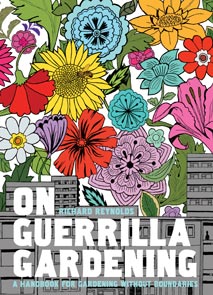 |
     |
Here are just a few tips I've learnt about how to go about Guerrilla Gardening, a basic twelve step guide of things to think about. These are not rules, you make them up, you're a guerrilla, they are just some lessons from war. Share yours and discuss more in the Community here. | |
1. Spot some local orphaned land. |
 |
| 2. Plan a mission. Make a date in the diary for an evening attack, when trouble-making busy bodies are out of sight. Invite supportive friends, or perhaps enrole supportive strangers by announcing your attack in the Guerrilla Gardening Community here. |
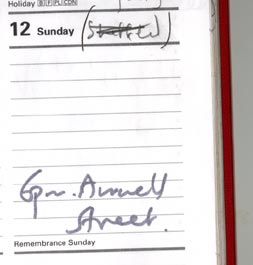 |
| 3. Find a local supply of plants. The cheaper the better. For city dwellers think local DIY stores, supermarkets and whole salers. The cheapest plants are ones that are free. Sometimes garden centres will have spare plants to give you for the cause. Or befriend someone with a garden (you might even be lucky and have a garden yourself). Think of these private spaces as the training camps for harvesting seeds, cuttings and plants hardened for their big adventure in the wilds of public space. If you have things going spare please leave a message in the Community forum for guerrillas near to where you live. |
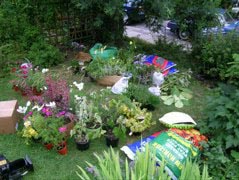 |
| 4. Choose plants for front
line battle. Think hardy - resistant to water shortages and the cold, and in some locations pedestrian trampling! These plants need to look after themselves a lot of the time. Think impactful - colour, ever green foliage, scale. These plants need to really make a difference, for as much of the year as possible. Visit the Community to get advice about specific plants for your part of the world, and to share your horticultural advice with the less experienced. In London I use a lot of herbs like Lavander and Thyme, tulip bulbs, shurbs. |
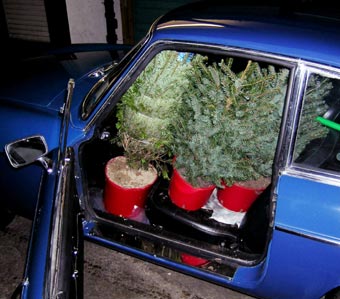 |
5. Get some Wellington Shoes.
|
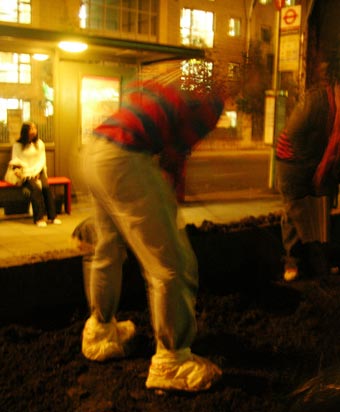 |
| 6. Bag some bags. Plastic bags, bin liners (not only can they keep your feet clean), but they are essential for clearing up the deteritous of war. Weeds, litter, flower pots, and pebbles need to be carried away. For gentle work recuse wind blown carrier bags or for more serious gardening reuse compost bags or giant sacks from builder's merchants. The thick plastic does not rip and you can lug a great deal in them to a nearby bin. |
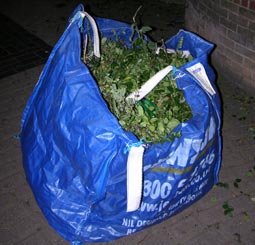 |
| 7. Regular Watering. One of the responsibilities of a Guerrilla Gardener is ongoing tendering. Water is short in many parts of the world, even drissly old London. The Guerrilla Gardener must usually carry water (though I know of New York guerrillas who have keys to road side hydrants!) I have used petrol cannisters, they are the perfect water-tight, efficiently-packed portable transportation. But it has caused passers-by to ask if I am a nocturnal arsonist. Julie (159) came up with the genius idea of using old water dispenser bottles. Here she is with the bounty from her office! They work extremely well. | 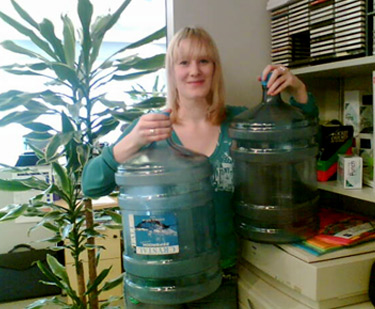 |
8. Seed bombs. |
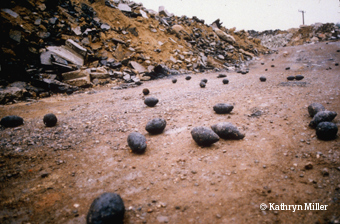 |
| 9. Chemical Warfare. Boost your plants with natural chemicals. Some guerrillas are lucky to have space for compost heaps. Alex (1797) lives in a flat with no garden so has employed an efficient army of red worms to help him make his chemical weapons. In a box in the kitchen his Eisenia Fetida transform food into a rich vermicompost and worm juice fertiliser. Click here to read his blog and for links to other worm farmers. |
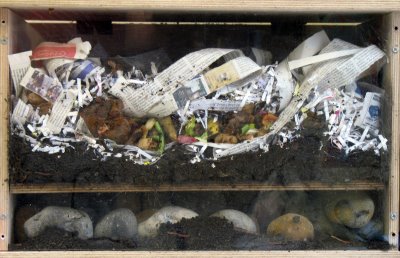 |
10. Spread the word |
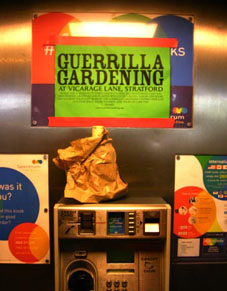 |
11. Transportation. |
 |
12. Buy my book |
|

